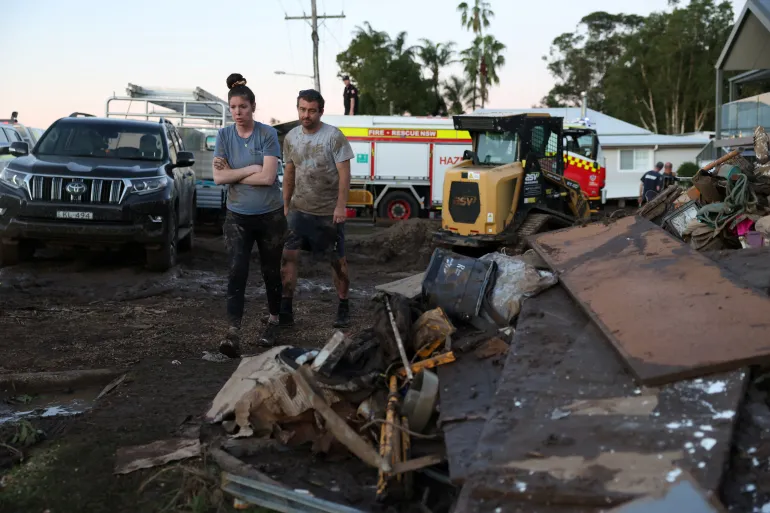Australia has begun a massive cleanup operation following catastrophic floods that have killed at least five people and left thousands stranded across parts of New South Wales and Queensland, according to emergency authorities. The floods, described as some of the worst in a decade, were triggered by days of torrential rainfall, submerging entire towns and sweeping away roads, homes, and vehicles.
“The devastation is widespread, and the damage is heartbreaking,” said Australian Prime Minister Anthony Albanese, who visited flood-hit areas on May 24, 2025.
Thousands remain without electricity and access to clean water as military helicopters, rescue boats, and volunteers continue evacuations and search operations across isolated communities.
🌧️ A Deluge of Destruction
The record-breaking rainfall began earlier in the week, with some regions receiving over 400mm (16 inches) of rain in just 48 hours. Rivers and dams overflowed, causing flash floods that inundated low-lying suburbs, rural farmlands, and even major highways. Hardest-hit areas include parts of Lismore, Gympie, and the Northern Rivers region, where entire neighborhoods were swallowed by rising waters.
Footage broadcast on national media showed residents climbing onto rooftops, waiting to be airlifted, and emergency responders wading through waist-deep waters to rescue children and elderly residents.
“We thought the 2022 floods were the worst, but this is even more terrifying,” said a Lismore resident.
🛟 Emergency Response and Challenges
More than 1,500 emergency personnel have been deployed, supported by the Australian Defence Force (ADF). Despite the rapid mobilization, many communities remained cut off due to washed-out roads and landslides. Authorities warned that some towns may be inaccessible for days, delaying aid and rescue efforts.
Rescue operations are also being hampered by communication blackouts and fuel shortages in remote areas. Over 25,000 people were ordered to evacuate, while temporary shelters in schools and town halls have reached capacity in some cities.
🏚️ Damage and Displacement
Initial assessments suggest hundreds of homes and businesses have been destroyed or severely damaged. Local governments are now preparing for a long-term recovery, as displaced families face weeks or months before returning home. Insurance agencies estimate potential losses to be in the billions of Australian dollars.
“It’s not just the physical damage — it’s the emotional toll,” said a mayor from Northern NSW. “People are traumatised, again.”
🌍 Climate Concerns and Political Pressure
The floods have renewed debate over climate change and disaster preparedness, with meteorologists linking the severity of the storms to warming ocean temperatures and more intense weather cycles. Environmental groups and opposition politicians are calling for stronger infrastructure, better floodplain planning, and urgent action on emission reductions.
“This is a wake-up call. Extreme weather is now our new normal,” said a spokesperson for Climate Council Australia.
⏭️ What to Watch
- Updates on fatalities, rescues, and evacuation zones
- Government announcements on relief funding and rebuilding programs
- Infrastructure repairs and restoration of power and communication lines
- Climate policy debate within federal and state legislatures
- Impact on agriculture and food supply chains in flooded regions
As waters begin to recede, Australians are left confronting the devastation of yet another extreme weather disaster, raising questions about how many more shocks communities can withstand — and what must be done to prevent the next one.
Source; Al Jazeera



